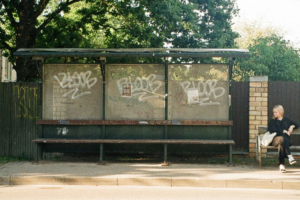From media reports, to posted signs in airport terminals, awareness has increased when it comes to remaining alert for potential victims of human trafficking when traveling by plane. But airports are not the only place where human trafficking hides. Other transportation centers are equally prone to these activities. Traffickers frequently use truck stops and welcome centers for recruitment. Traffickers benefit from the higher level of foot traffic. But they also can benefit from the often rural location of these rest stops.
Why Human Trafficking Needs Our Attention
An estimated 6.3 million people worldwide are currently being sexually exploited. 1.7 million of these people are believed to be children. Worldwide trends are moving in the wrong direction. The estimated number of victims of human trafficking and other forms of forced commercial sexual exploitation grew by 31.2% from 2016 to 2021.
The Americas represent 13.0 percent of the world’s enslaved forced-labor population (which includes human trafficking victims). The estimated number of victims is about 3.5 people per every 1,000 persons.
Cities vs. Rural Areas
Generally, people perceive cities as crime centers, while rural areas are considered safer. According to the National Center on Safe Supportive Learning Environments, trafficking in rural and urban areas have many similarities but also significant differences. One difference is that because rural areas are considered safer places, residents and local law enforcement tend to underestimate the threat of trafficking in their communities. Victims seeking help are less likely to be believed, in part because of the presumed low risk. This is also a problem because perpetrators are more likely to be family members. With familial traffickers, self-reporting and witness reporting is trickier for all parties involved. Further exacerbating the lack of help for victims in rural areas is the fact that victim services are less readily available. There is also a lack of training in rural communities to know the signs and how to help victims best.
Training for service providers, educators, religious leaders, and the general public can be as simple as taking advantage of free online resources. The U.S. Department of Justice’s Office of Victims of Crime provides such resources.
Human Trafficking in Georgia
In 2019, the State of Georgia advanced its anti-trafficking efforts. The Human Trafficking Protection Unit was created within the Georgia Bureau of Investigation. The state’s efforts have ranged from annual video training for state employees to recognize potential signs of a victim to dedicated efforts of prosecutors, investigators, analysts, and victim advocates to rescue victims and prosecute perpetrators. In January 2025, the state reported 54 convictions and nearly 200 children assisted by the program.
If you suspect human trafficking, please contact the statewide 24-Hour Georgia Coalition to Combat Human Trafficking Tip Line at 866-ENDHTGA (866-363-4842) or the National Human Trafficking Resource Center at 888-373-7888.
To discuss how your parish or organization may receive financial support for a new or existing program to combat human trafficking in your community, contact ECF today.
Sources:
- “Human Trafficking in America’s Schools,” National Center on Safe Supportive Learning Environments, January 2021
- U.S. Department of Justice, Office of Victims of Crime, Training and Technical Assistance
- “Global Estimates of Modern Slavery: Forced Labour and Forced Marriage,” International Organization for Migration, September 2022


